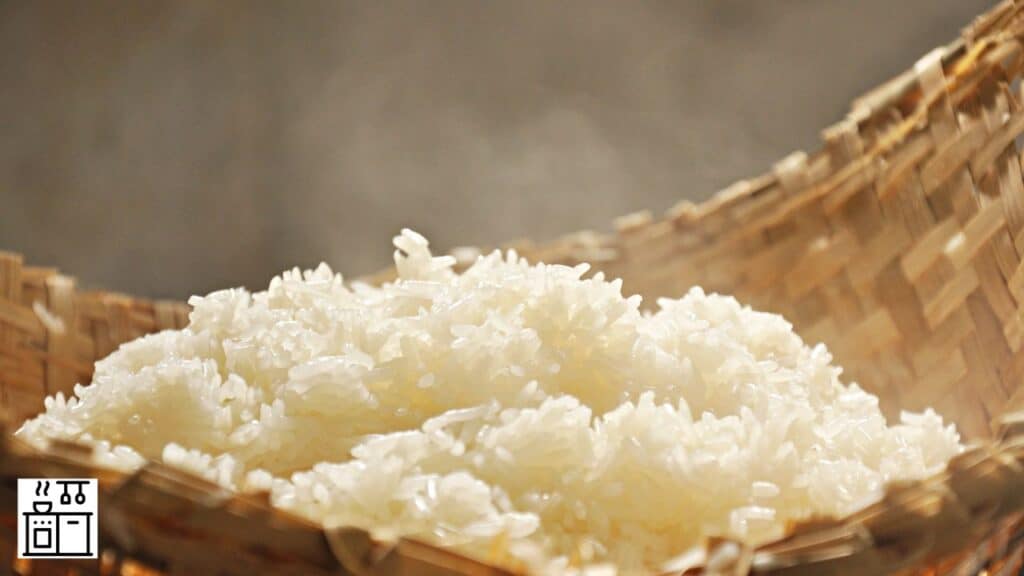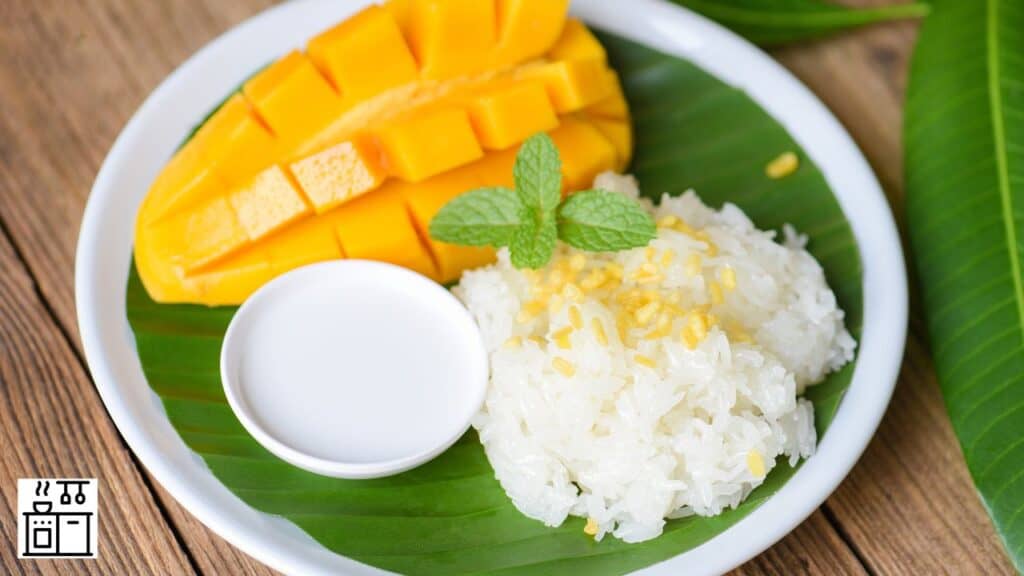Sticky rice is the best side dish for different Asian dishes like stir fries and curries. The traditional way of making it is by steaming.
But you can also prepare it in a rice cooker. Making sticky rice in a rice cooker allows you to cut down on several steps, making it very easy and quick.
Let us look at how to make the perfect sticky rice in a rice cooker every time.
Steps to Make Sticky Rice in A Rice Cooker
Making sticky rice in a rice cooker is simple and easy if you follow this sequence of steps.
1. Rinse the Rice
Rice is a starchy grain. The starch in it makes the grains clump together after cooking.
In the case of sticky rice, you may want the grains to be sticky. However, they should not be too sticky. So it’s important to rinse the rice.
Rinsing rice with water gets rid of excess starch. It separates the grains and makes them fluff up after cooking.
Apart from removing starch, rinsing also cleans impurities in the rice.
It will remove any dirt and debris in the rice and make it safe to consume.
To rinse the rice, place the required quantity in a mesh container. Wash it under cold running water till the water runs clear.
Alternatively, you can also soak the rice in a vessel and swirl it, followed by pouring the water out to get rid of the starch.
You may have to repeat this a couple of times for the water to run clear.
Rinsing the rice grains only gets rid of the excess starch.
It does not eliminate all the starch; the rice will still have enough starch to make the grains sticky enough.
2. Soak the Rice
This step isn’t compulsory. But the results are better when you soak the rice grains before cooking.
Soaking allows rice grains to absorb moisture better and cook evenly. So we recommend soaking it for at least thirty minutes before cooking.
You can soak the rice in cold water.
An important tip to remember here is that measure the rice before soaking it since the grains will change in size after soaking.
So this can make the water measurements confusing afterward.
3. Measure the Water
There are several types of sticky rice varieties, like short-grain Japanese rice, long-grain Thai rice, and black sticky rice.
Each of them cooks differently. So, the required water quantity also varies.
For most types of rice, the water-to-rice ratio is mentioned in the label or instruction manual. You can follow these instructions.
For sticky rice, the ratio is usually 1: 1.5 or 1:1.75. If the manufacturer does not specify anything on the packaging, you can follow this ratio.
Measure the rice and water using the same cup to avoid any slip-up in measurements.
Also, measure the rice before soaking to ensure you get your measurements right.
4. Cook the Rice
After draining the rice, add it to the rice cooker. Some rice cookers have a special setting for sticky rice.
Use this setting if it’s present on your rice cooker. If not, you can cook it in the regular setting.
Most of the time, flipping the switch starts the cooking process.
The rice cooker will automatically turn off or switch to the “Keep Warm” mode when the rice is cooked.
5. Let the Rice Rest Before Fluffing It
When making sticky rice, we don’t recommend serving it as soon as it cooks.
Allow it to sit in the rice cooker with the lid closed for ten to fifteen minutes.
This will allow the rice to steam and absorb any remaining moisture. It will also make it sticky.
After ten to fifteen minutes, open the lid and break the clumps of rice.
You can use a rice paddle or fork. It will make the rice much easier to serve.
Difference Between Normal Rice and Sticky Rice

You can prepare both normal rice and sticky rice in a rice cooker. In normal rice, the grains will be separate whereas they will stick together in sticky rice.
This difference is not due to the cooking method or rice-to-water ratio. It’s because of the differences in the type of rice.
Here are some factors that characterize sticky rice.
1. Starch Content of Sticky Rice
Rice contains two types of starches: amylose and amylopectin. The ratio in which these starches appear decides the texture of the rice.
Higher amylose levels make the rice light and fluffy. Higher amylopectin makes the rice grains clumpy, and they stick together.
Sticky rice has a higher amylopectin content. When you cook the rice, amylopectin makes the rice soft and creamy.
2. Longer Cooking Time
The rice-to-water ratios for regular rice and sticky rice are comparable. It’s typically 1:1.5 or 1:1.75.
However, the main difference is in the time it takes to cook the rice. Sticky rice takes longer than normal rice to cook.
3. Sticky Rice Does Not Contain Gluten
Sticky rice is also called glutinous rice, though it’s gluten-free. It’s called “glutinous” because it develops a glue-like texture.
As we mentioned earlier, this sticky texture is due to its high amylopectin level.
It has nothing to do with the elastic and sticky nature of wheat flour.
So the name glutinous isn’t related to the gluten content of the flour.
Best Varieties of Sticky Rice for Rice Cookers
There are different types of sticky rice available. Each variety has its distinct flavor and aroma that makes it unique.
The good news is that you can cook all of them in a rice cooker.
Here are some of the different varieties you may want to try.
Thai Sticky Rice
This rice comes from Thailand and is also called “khao niao” in Thai. It has a slightly sweet flavor and a chewy texture.
This rice is very aromatic. It’s popularly used for recipes like mango sticky rice and coconut sticky rice.
Japanese Glutinous Rice
The rice used for sushi and sashimi is often Japanese glutinous rice. It’s soft, sweet, and sticky with a chewy texture.
The stickiness of this rice makes it easy to mold it inside seaweed or nori wraps for sushi.
Chinese Sticky Rice
Chinese sticky rice is also called Zongzi. It’s white and sticky. This rice is mostly eaten with steamed vegetables and meat.
It’s also used to make rice dumplings, which are very popular in Chinese cuisine.
Black Sticky Rice
Black sticky rice is a specialty variety used in Asian cuisines. It’s commonly used to make desserts like sticky rice pudding.
This rice has a distinct black or purplish color and a delicious nutty flavor.
Red Sticky Rice
This is a whole-grain variety in which the rice grains have a rust or brown color. It has a strong nutty flavor.
This rice is commonly used in South-Asian desserts.
Further Reading: How to Use a Rice Cooker Properly?
White Sticky Rice
White sticky rice is a mild-tasting variety of sticky rice that is used as the base for many dishes.
As the name suggests it’s white and has a soft but chewy texture. You can use this rice for both savory and sweet dishes.

